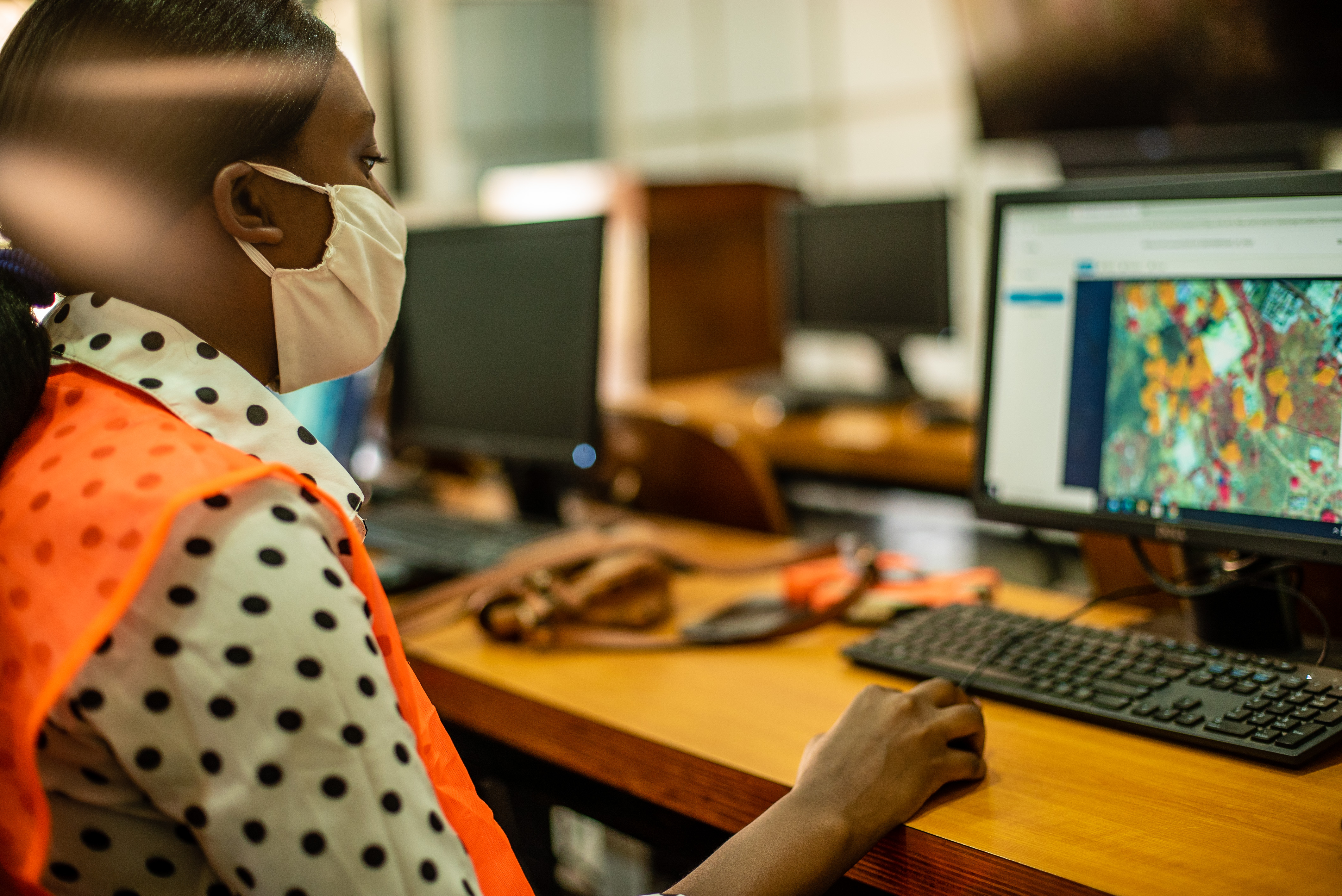In many cities across Africa—a continent that is urbanizing faster than any other—the buildup of disaster and climate risks has gone largely unnoticed, and therefore unmanaged. A key roadblock for urban resilience planners and practitioners is the scarcity of reliable risk data, including data both on the location of people and assets and on their exposure and vulnerability to natural hazards and climate change.
In response to this challenge, GFDRR and the World Bank have supported the mobilization of over 1,300 young people to systematically gather risk data on African cities. In addition to promoting open access to risk data that will be used to inform resilience and disaster risk management efforts, this engagement is also designed to generate durable skills and livelihood opportunities for young people, including those impacted by the COVID-19 pandemic, in the ever-changing digital economy.
A key first step for the technical team was to identify risk data collection tasks that were suitable to a range of skillsets while also responsive to the needs of urban resilience and disaster risk management planners and practitioners in Africa. Moreover, in the context of the pandemic, the team identified tasks that could be performed remotely and, in accordance with local public health guidelines, in the field. Subsequently, the team also tapped a range of local partners specialized in risk data collection, including the Open Cities Africa network, to not only recruit, hire, and train young people but also to ensure the quality of the data output.
Focusing on cities in Kenya, Mali, Sierra Leone, and Tanzania, the initial phase of this engagement, which has since been completed, demonstrated what is possible when young people are engaged in efforts to close the risk data gap.

As part of this engagement, a student of the Resilience Academy in Tanzania creates tree canopy training data over Dar es Salaam and Freetown. Photo: World Bank.
RESULTS IN NUMBERS
Over 1,300 young people mobilized to close the risk data gap in African cities; 45 percent of them are women.
For example, nearly 120 participants, working remotely, used an open-source mobile application to collect data on the location of solid waste sites in Bamako, Mali. These data are now enabling the government of Mali, with technical support from a World Bank team, to design and plan solid waste management investments in Bamako, including through a $250 million Bamako Urban Resilience Project under preparation.
In another example, in four cities across Kenya, over 160 participants went into the field to collect data on the location of urban services, particularly congregation hotspots such as water fountains, bus stops, and public toilets. These data are expected to inform local authorities’ emergency and disaster risk management planning and preparedness efforts, including in the context of the COVID-19 pandemic.
These locally led data collection efforts have become even more effective when combined with disruptive technologies such as machine learning and Earth observation. For instance, 50 participants working remotely used an open-source digital platform to collect data on urban canopy coverage in Freetown, Sierra Leone. These data have been used to develop a machine learning algorithm that has since helped the city of Freetown establish a baseline for its ambitious reforestation campaign called Freetown the Treetown.
Building on what has been achieved thus far, a key focus for the next phase will be to expand the engagement to include more young people while also enhancing the professional development of the participants. Plans are underway to develop a credentialing system where participants can demonstrate their proficiency in the range of the digital skills they honed in the process of collecting data—from basic skills such as data entry to more advanced ones such as spatial data analysis. Furthermore, the next phase will also focus on how to tailor these community driven risk data collection efforts so that they can better complement new Earth observation technologies, in line with the vision of the Digital Earth Partnership, a new GFDRR global program to be established in FY22.
LESSON LEARNED
A key finding from the engagement is that, even with minimal training, participants with limited digital skills can collect high-quality geospatial risk data through simplified data collection processes. In the process, they advance the goal of promoting open access to risk information and they learn. However, more extensive, hands-on training may be required for more advanced tasks, such as imagery interpretation and feature identification, which also could open an opportunity to link with more formalized up-skilling and income generation opportunities as part of the processes.
